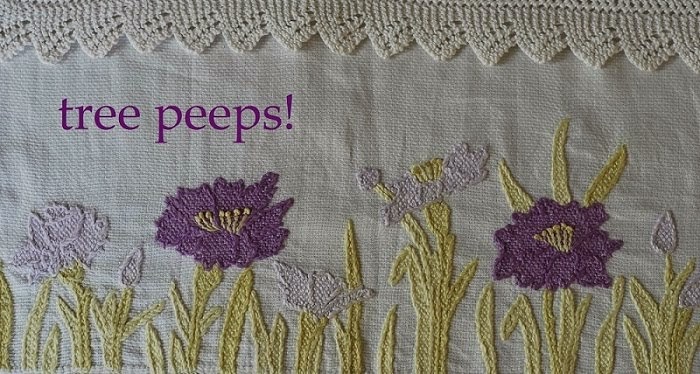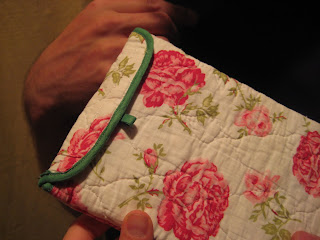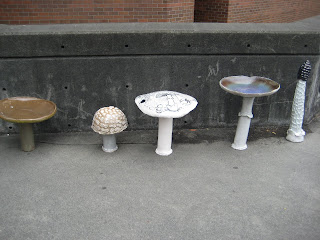
In May, I worked in the Caribbean at a recycled art center at
Maho Bay Camps on US Virgin Island St. John. My friend, Annalisa, runs the batik studio at the art center and I was lucky enough to visit her and work there for a month. I intended to post photos a long time ago from that trip, both scenic and of the sewing and batik, but I've been busy. Here is the first of a series of posts.
Batik lesson from a tropical recycled art center:
1. Choose Material- we used sheets recycled from the laundry services of the camps. 100% cotton was our prefernce, but sometimes we had to use 50-50 Cotton/Polyester. Dye does not adhere well to polyester and wax is difficult to remove from polyester, so we do not recommend it! Use Cotton, Rayon or silk for batik.
Here, I am using a vintage/thrifted 100% cotton curtain for this personal sample that I will take home. Be sure material is washed, free of oil-stains, and ironed before using.
2. Create a stamp- Annalisa cuts her stamps from old, foam mattress pads salvaged from the housekeeping department of Maho Bay Camps. You can create any shape or image if you are careful in the planning and cutting. You can see some stamp examples in the photo above. Here, Annalisa used razor blades to cut this stamp to portray a plant growing near the art center. (I thought I took a photo of the plant, but I can't find it....). This stamp is great because she made sure the upper side of the image fit well with the lower side of the image so it can be stamped in series like a vine.
(I thought I took some close-up photos of stamps, but you will have to get the idea from these photos)
3. Wax- melt paraffin (or a combination of paraffin, microcrystallin, and beeswax) in an electric skillet. These are cheap at thrift stores and allows a portable, constant low heat source. Try to batik outdoors or in a well ventilated area. Wax fumes are very bad for your lungs. Never heat wax to the point where it vaporizes and you see fumes. Always use a fan to blow the air near the wax away from you.
(Here is Annalisa stamping cloth with wax)
4. Stamping- Set stamps in the melted wax, there should be about 1/2" wax in skillet. The wax will soak into the stamp like a sponge. Lift the stamp and shake, but don't tip before stamping. You can do a series of 5-10 images before re-dipping the stamp in wax. The first image will be little "juicier" than the last image but this can be managed through practice. Use a plastic sheet under your work, and lift your waxed material frequently while still warm to prevent it from sticking to the sheet and then leaving fibers exposed.
*When finished stamping, fix any mistakes manually with a triangle piece of foam dipped in wax. After waxing the front, turn the material over and fill in any areas where the wax didn't soak through and saturate the fibers on the back. Any exposed fibers will take up color when dyed.
(cloth before dyeing, waxed with a variety of stamps)
5. Dye-Soak the waxed material in soda ash solution. Mix the dye according to instructions. Here we used a fiber reactive dyebath in plastic tubs.
6. Rinse- We sprayed with a hose
7. De-wax- Unfortunately, I don't have any photos of this step...and it is one of the more important steps. After all that waxing and dyeing, now we need to get the wax off. The best way is by boiling the cloth in water on an outdoor burner. As the wax floats to the top, skim it off and store in a plastic container to re-melt for later batik. Boil, agitate the cloth, stir and pound with a long stick, skim off wax, repeat. Do a preliminary de-wax to remove the bulk of the wax, change water, and then do a more refined de-wax to remove as much wax as possible. This is a physically demanding step, fyi.
8. Wash, Dry, Iron your new batik print!
9. And finally, the
Sewing step. Cut out and sew cute things! From my two pieces of green vine print batik, I cut out two shoulder bags and used the scraps to make tiny zippered pouches/boxes/cozies (whatever you want to call them). I love making cozies. It's nice when everything has it's own container. I have a long list of objects that need cozies.



**Thanks Annalisa for the batik lesson!























































